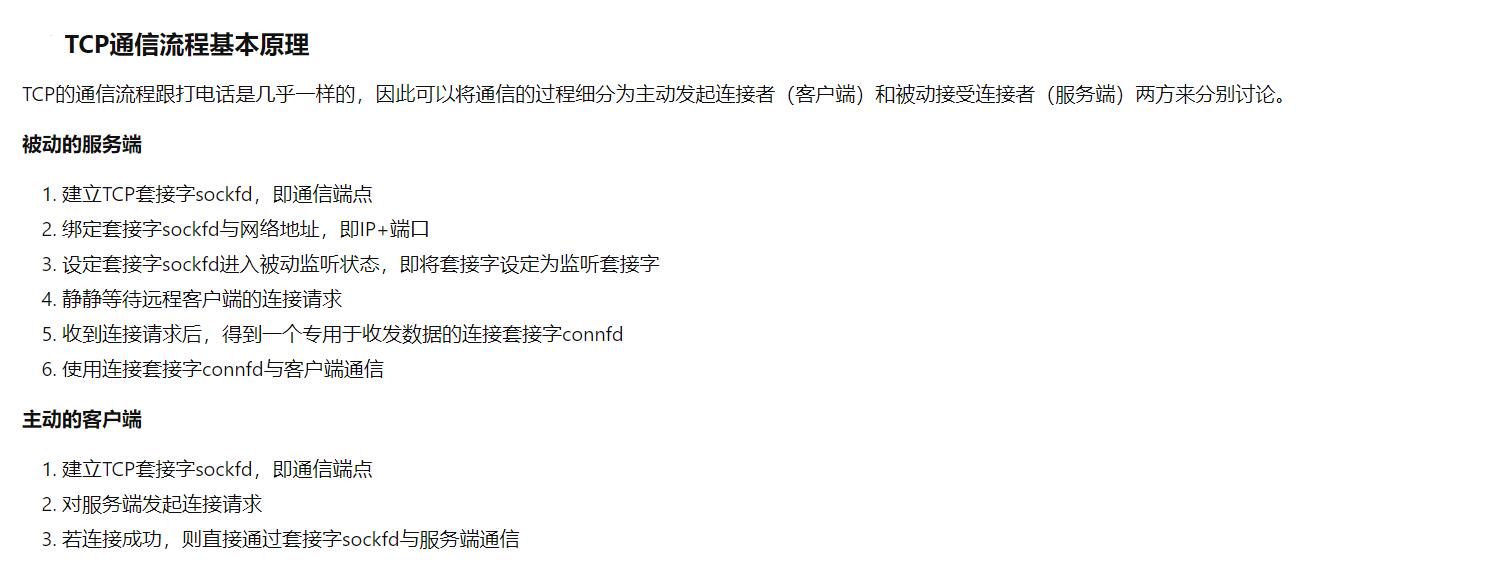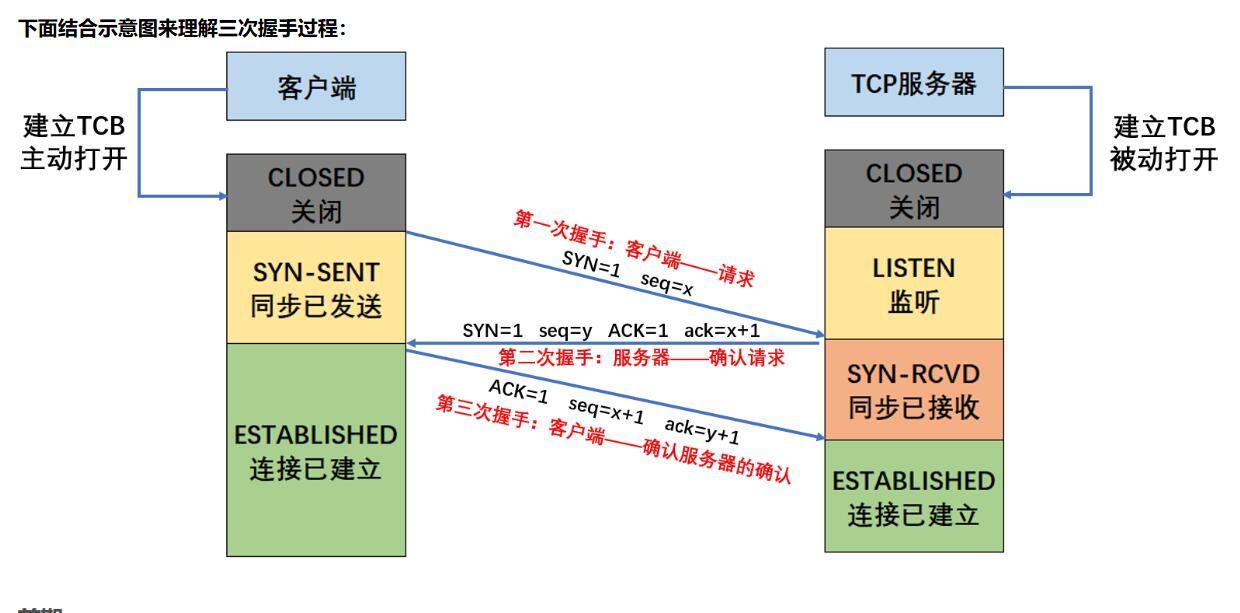基于c语言的TCP客户端、服务端基础代码
基于c语言的TCP客户端、服务端基础代码
基本流程:

- 客户端:
#include <sys/socket.h>
#include <netinet/in.h>
#include <arpa/inet.h>
#include <stdio.h>
#include <errno.h>
#include <sys/socket.h>
#include <netinet/in.h>
#include <netinet/ip.h>
#include <arpa/inet.h>
#include <sys/socket.h>
#include <netinet/in.h>
#include <netinet/udp.h>
#include <stdlib.h>
#include <string.h>
#include <sys/socket.h>
#include <unistd.h>
/* * * * * * * * * * * * * * * * * * * * * * * * * * * * * * * *
*
* tcp客户端(发送)
*
*
*
*
* * * * * * * * * * * * * * * * * * * * * * * * * * * * * * * */
int main(int argc, char *argv[])
{
int sockfd = socket(AF_INET, SOCK_STREAM, 0);
struct sockaddr_in addr;
addr.sin_family = AF_INET; // 协议族,是固定的
addr.sin_port = htons(atoi(argv[1])); // 服务器端口,必须转换为网络字节序
addr.sin_addr.s_addr = inet_addr(argv[2]); // 服务器地址 "192.168.64.xxx"
connect(sockfd, (struct sockaddr *)&addr, sizeof(addr));
char sendbuff[100];
char recvbuff[100];
while (1)
{
bzero(sendbuff, 100);
scanf("%s",sendbuff);
// fgets(sendbuff, 100, stdin);
// 向服务端发送数据
write(sockfd, sendbuff, strlen(sendbuff));
//还可以使用send、sendto、sendmsg、
// 接收TCP回弹服务器的消息
printf("收到消息recvbuff = %s\n", recvbuff);
bzero(recvbuff, 100);
}
close(sockfd);
return 0;
}
- 服务端:
#include <sys/socket.h>
#include <netinet/in.h>
#include <arpa/inet.h>
#include <stdio.h>
#include <errno.h>
#include <sys/socket.h>
#include <netinet/in.h>
#include <netinet/ip.h>
#include <arpa/inet.h>
#include <sys/socket.h>
#include <netinet/in.h>
#include <netinet/udp.h>
#include <stdlib.h>
#include <string.h>
#include <sys/types.h>
#include <unistd.h>
//TCP服务器代码 ./xxx port
/* * * * * * * * * * * * * * * * * * * * * * * * * * * * * * * *
*
* tcp服务端(接收)
*
*
*
*
* * * * * * * * * * * * * * * * * * * * * * * * * * * * * * * */
int main(int argc, char const *argv[])
{
//1.创建TCP套接字
int tcp_socket = socket(AF_INET, SOCK_STREAM, 0);
if (tcp_socket == -1)
{
fprintf(stderr, "tcp socket error,errno:%d,%s\n",errno,strerror(errno));
exit(1);
}
//2.绑定自身的IP地址和端口
struct sockaddr_in host_addr;
host_addr.sin_family = AF_INET; //协议族,是固定的
host_addr.sin_port = htons(atoi(argv[1])); //目标端口,必须转换为网络字节序
host_addr.sin_addr.s_addr = htonl(INADDR_ANY); //目标地址 INADDR_ANY 这个宏是一个整数,所以需要使用htonl转换为网络字节序
bind(tcp_socket,(struct sockaddr *)&host_addr, sizeof(host_addr));
//3.设置监听 队列最大容量是5
listen(tcp_socket,5);
//4.等待接受客户端的连接请求
struct sockaddr_in client;
socklen_t client_len = sizeof(client);
int connect_fd = accept(tcp_socket,(struct sockaddr *)&client,&client_len); //会阻塞
char buf[128] = {0};
//5.说明双方建立连接,此时可以接收数据
while(1)
{
read(connect_fd,buf,sizeof(buf));
printf("recv from [%s],data is = %s\n", inet_ntoa(client.sin_addr) ,buf);
bzero(buf,sizeof(buf));
}
return 0;
}
-
三次握手示意图:

-
示意图解释:
第一次握手:发送一个SYN标记(请求同步标记)
发送一个序列号seq:x
第二次握手:返回一个SYN标记
返回一个ACK(应答标记,表示我知道了)
返回一个序列号seq:y
返回一个x+1序列号ack(告诉客户端希望下一次数据从+1开始)
第三次握手:发送一个ACK标记
发送一个序列号seq:x+1
发送一个序列号ack:y+1


 浙公网安备 33010602011771号
浙公网安备 33010602011771号